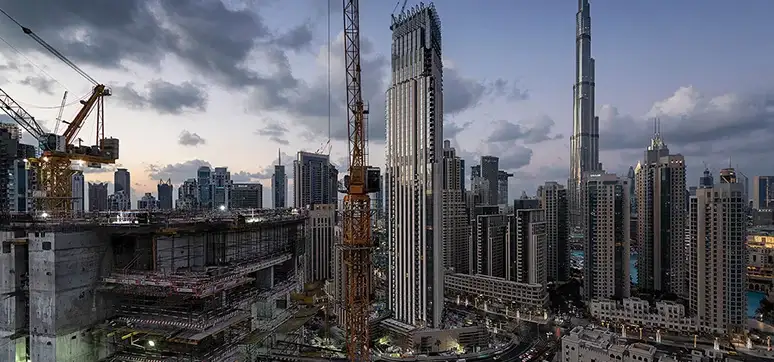Agnes Koltay is a Façade Consultant & the CEO of Koltay Façades, in an exclusive interview with Window & Façade Magazine, she shares her views about the latest innovations in façade design. Below are the Exceprts…
Could you please brief our readers on the history and objective behind the formation of your company?

I have been attracted to high-rise buildings since about age eight when my father brought home an issue of National Geographic Magazine with amazing fold-out page photos of famous American skyscrapers. During my architectural studies, I oriented more towards actual technical solutions, and façade engineering is the best discipline to interlace conceptual architectural aesthetics with hardcore technicality.
I was not particularly dreaming of my own consultancy business, I was enjoying projects while working with multidisciplinary engineering firms.
At the time when I arrived in the UAE in 2005, the speed and magnitude of construction and the level of progress kept me excited. I worked on Festival City towers, various Sheikh Zayed Road buildings, towers in Marina and so on, and over the years I had to take a growing part in management. Until one day in 2010, I went for a three-week vacation to Yemen, a country with beautiful nature and very unique traditional architecture – but no data signal. Not receiving 80+ corporate emails a day on my Blackberry gave me time to think and consider future directions. One thing I found, was the longing to fully dedicate myself and the team to façade engineering, and shape our ways to suit the best to this particular discipline. In large companies, it naturally happens that smaller disciplines enjoy lesser attention within the organisation.
I envisaged a small boutique firm, which is dedicated to bringing value to engineering projects via technical expertise, innovation and passion. I wanted to select the projects we work on. Being an architect, I understand the language and appreciate good design. And if you really want something, the best way is to do it! I tendered my resignation upon my return from Yemen. After an additional three and a half months break with intense travel, Koltay Façades got registered in Dubai, the city that I feel is my home.
Could you please tell us about a few of your latest prestigious projects and the innovations you made?
We basically have three distinctive categories of work: full envelope design for large developments of high-rise towers or other mega projects, complex freeform geometry buildings and structural glass structures. The later one is very engineering demanding specialty, but gives the largest freedom and opportunity to innovate and develop unprecedented solutions. We work closely with the research teams of a number of major suppliers, who are keen to get involved in new ideas. Freeform geometry is something we gained a reputation for, through projects like “Opus” or “Museum of the Future”, and many others.

While parametric design tools are widely available in an architectural software range translating it to mass production during manufacturing has been a missing chain piece. Recently, more and more fabricators have adopted fully computer-instructed manufacturing methods, where using 1 file for 100 panels does not cost less than using 100 different files to machine 100 panels. This is revolutionising the industry and we are ahead of it connecting architectural concepts to current-edge technology. For the first category, we work on remarkable iconic buildings like four towers over the large podium at Fountain Views, Sky View and its newest tourist attraction observation areas. We handed over Burj Vista earlier last year. We are working on two tall hotel projects in Marina: Jumeirah Gate and Meydan Beach Hotel, also on several buildings in Business Bay.
We started our Singapore office 2 years ago and are growing there: we have just finished the design phases of 14 buildings for a university campus in Singapore, as well as a high-rise hotel tower in Vietnam. In 2018, we worked on several European projects too, including the tallest building in Hungary by Foster and Partners.
What are your views about BIM technology? Are there any challenges faced in using BIM Technology? What other software innovations do you foresee to impact the profession?

It has been a slow process in the industry, for both architects and engineers, towards fully utilise the unique capabilities of BIM, and to wait until BIM platforms are developed to a level where it eases our work.
At the current stage, BIM offers opportunities that were unheard of at 2D ages. At first, improvement of structures – MEP coordination was targeted and achieved. Then it is used to provide a useful information framework for facility managers and enable smart building solutions. We look forward to future stages of BIM development, where façade specific aspects can get the focus.
Currently, for the pre-award design stage, we still find geometry-specific parametric scripting methods more powerful when it comes to automatisation or analysis, and still find non-model-based software caters more to detail drawing needs. However, we rely heavily on BIM for input information and we cooperate intensely at the early phases for a correct and strong foundation of the envelope design in the BIM platform.
BIM-based documentation aids façade contractors well with ease of keeping track of quantities. Another interesting area of software development is virtual reality and augmented reality applications of the BIM model, with an extremely wide range of potential use, ranging from marketing purposes to actual site inspections, where the inspector can overlay the approved design with reality on site.
And talking about our cyber future, we are also hopeful and excited about drone technology and its possible applications in external façade inspections, both during construction and during regular maintenance cycles, subject to development of specific and adaptable smart scanning systems.
What are the several parameters to keep in mind while designing an innovative façade?

Innovation needs an opportunity. We need to adopt a very open-minded, out-of-the-box general approach to notice or find these opportunities – and the developer has to be on board for it.
It does not necessarily mean extra budget or extended design phase, it just means a bit of risk-taking when trying something that has not been tried many times before. We have a good mental library of new international approaches, trends, materials, systems, etc., collected from conferences, companies, research labs, and our own work, waiting for the right project opportunity.
However, not every building needs innovation or offers the opportunity of innovation, and this should be clarified at the beginning before any design has been proposed.
A clear brief and mutual understanding, and alignment of client interest with design direction are critical for the success of any project. Good architecture and good engineering is not defined by its level of innovation or fanciness, but rather whether it is meeting the client’s aim in an optimal way.
What are the changes you see in façade design over the years?
We have seen designs departing from strictly uniform, repetitive units towards unique shaped elements. We also have noticed a varied level of awareness of the life cycle maintenance cost and value of reputation cost. Certain aspects cannot be rectified later, for example, the sound insulation properties of fixed glazed façades cannot be improved without replacing the glazing with thicker insulated glazing units. Other aspects may only be improved at a larger cost, for example rectifying careless installation of waterproofing. It is easier to get these things correct during construction than to deal with the potential ongoing maintenance and reputation loss later.
How easy or quick was the rendering process of the final façade design vis-a-vis a decade back?
While software products helped speed up the documentation phase, client and industry expectations equally increased with them, both in terms of the expected level and amount of documentation, and shorter design programme times. The change is gradual. So maybe the difference is not as big within a decade as within say the past 30 years. The challenge here is definitely the shorter design programmes, as a large part of our work is a mental process, which is sequential, and includes trying multiple options and directions to find the optimum design. This cannot be speeded up to a large degree as we are still humans, so the design may suffer from unrealistic programme durations. As Warren Buffett said, “You cannot produce a baby in a month by getting nine women pregnant”.
What were the biggest milestones for 2018?

It has been a very eventful year and definitely the year of wider international focus. After starting our Singapore office in late 2016, it is growing now and in August this year, we moved into a large permanent office in Suntec City. We also work on several projects in Europe now. Our Azerbaijan projects are intense on the site and we travel frequently to oversee it. We spoke, chaired and contributed at several conferences in the UAE, Singapore, Germany, UK, Belgium, Italy, Vietnam and Indonesia. We have got ISO certification this year, as we are not that small anymore.
We also got awarded as the “Specialist Consultancy Company of the Year”, and I was honoured to receive the award of “Woman of the Year” in the field of construction. I was also invited by CTBUH to chair the jury for their newly introduced Façade Engineering Award. And, of course, many great achievements of projects, including the successful handover of the iconic Burj Vista towers in July 2018.
Where do you see your company in 2020?
We are a true Dubai-born company and we hope to continue supporting UAE projects as our core business. However, we are responding to demand from abroad, and setting foot in other continents. Our growth is only limited by the speed of finding talented colleagues, as our work can only be as good as our people. We are proud to have very high levels of internal communication and understanding, a really good and strong team, with real teamwork, even between our international offices. We are also very diverse with 18 different nationalities of 32 employees. I am really happy to come to work with my colleagues every day.
What do you see as the main challenges faced by your industry?
Façade engineering is a relatively new discipline compared with architecture or structural engineering, hence not as well defined. Expectations of our scope, the minimum level of deliverables, limits of involvement, and the related level of remuneration may range widely depending on the previous experience of the requesting party.
All the photos are taken by Agnes Koltay, Koltay Façades














